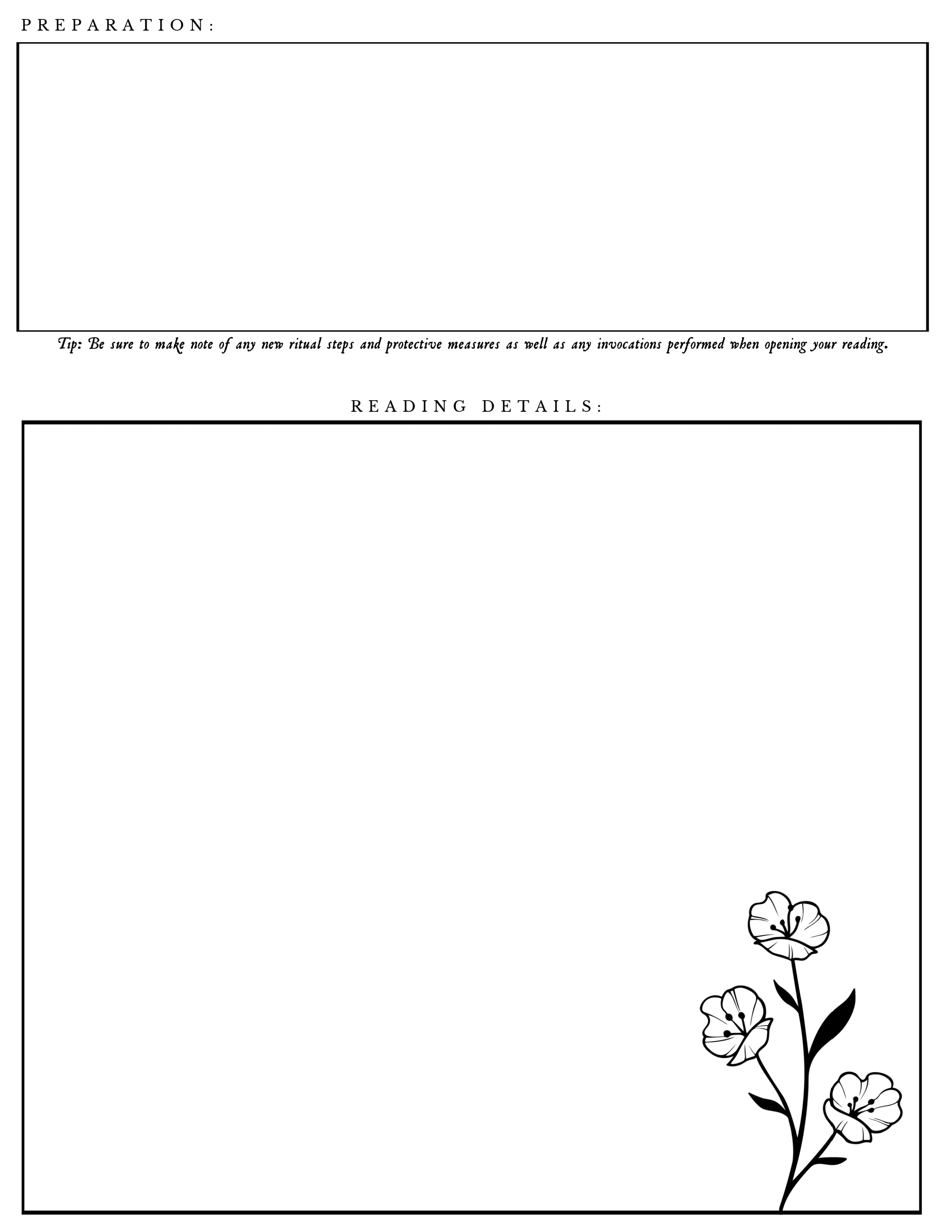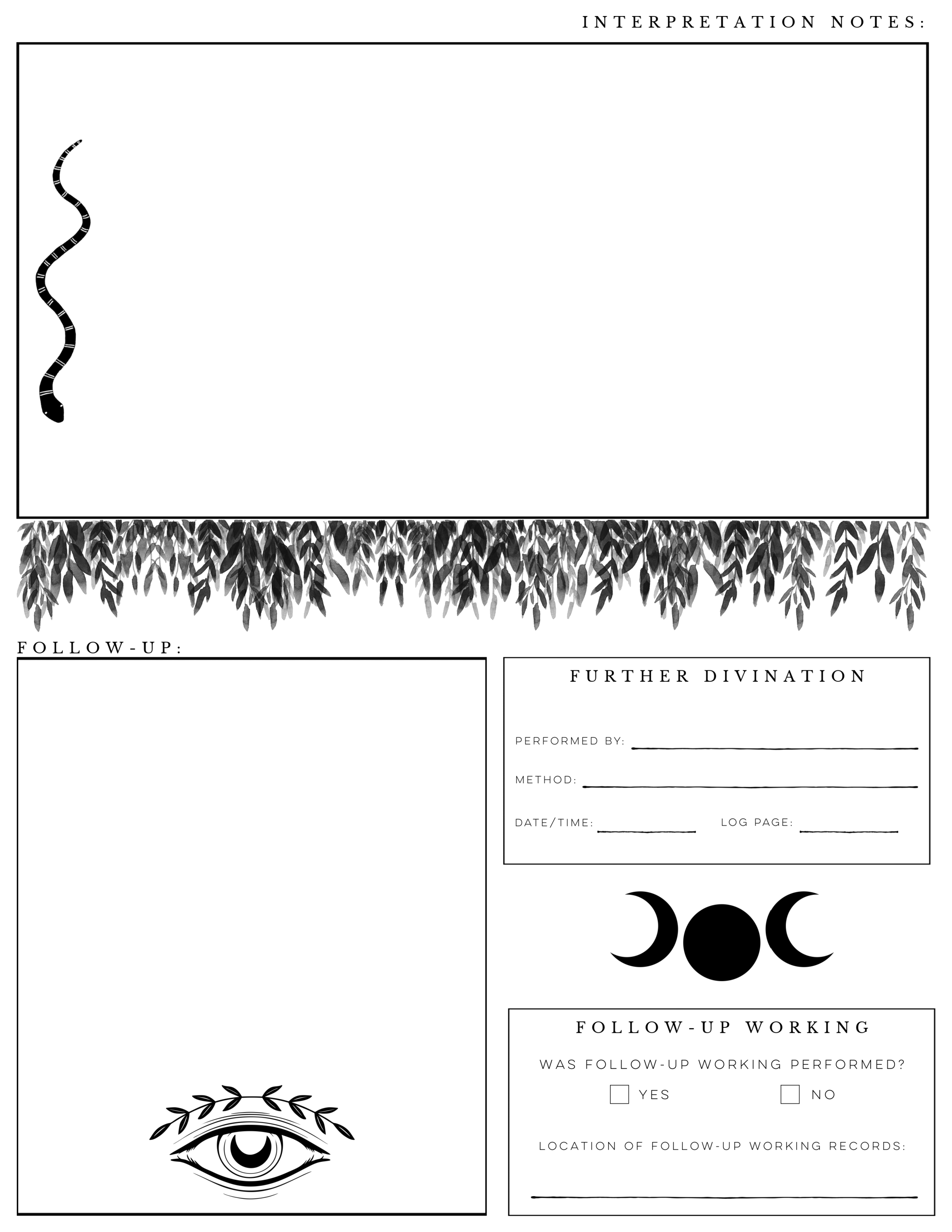Free Printable: Divination Log/Record
Divination comes in many forms and is done around the world by practitioners of magic as well as non-practitioners. Simply defined, divination is the art or practice of using tools, intuition, spirit work or some combination thereof to make predictions about the future or ascertain the unknown. Divination has always been a large part of my practice (particularly with regards to working with clients), but it has always been a part that I have struggled to keep organized working records of. Because divination can be used for so many things—from understanding the potential impact of a magical working to identifying spirits that come to visit—the records we keep of our exchanges and readings can be a really big deal. And having them disorganized and ineffective is never fun.
Our Divination Log Printable is a free resource that is designed to improve your divination record-keeping. This is an instant download, in PDF format. It is ideal for use by beginners and veteran diviners. And, yes, you can use it as your reading form for divination performed for paying clients! (For professional use and redistribution, please leave credit intact and do not alter. Thanks!) This three-page form is ridiculously open-ended, making it suitable for use with all manner of divination; and provides a structured template for detailed records that cover all the necessary bases and help diviners to track their growth and progress over time. Note: This printable is intended to serve as a record for intentional acts of divination. Stay tuned for another post on recording omens, messages, and augury.
Included Sections:
Date & Time and Method fields at the top of the page allow you to simply and quickly record exactly when the reading was performed and what methods were used. Because they are at the top of the page, they are easy to see when referring back to your records later on.
Inquiry/Question field gives ample room to briefly explain what question you were asking or advice you were seeking through the reading.
Tools Used field provides a space for you to get into specifics about your tools. For example, specific Tarot/oracle decks, a certain set of runes or a particular book. This information may be helpful to beginners who are learning which tools they receive the clearest answers from, as well as practiced readers who have nuanced relationships with their many tools.
Timing Notes provides a small space to detail any relevant information about the timing of the reading—be in on the Full Moon, on the heels of a recent family death, or on a holiday. The space is small, but enough for brief astrological notes.
Environmental Notes is a field intended to help diviners track when, how and where they perform their best readings and to understand fluctuations in clarity or accuracy that may result from variations in surroundings from reading to reading. Use this space to make note of how and where you performed your reading (in a dark room by candlelight, perhaps), and other factors which may have influenced it (such as thunderstorms or loud noise).
Method Notes provides a space to elaborate on the methods used as well as modifications and accommodations made to them. It is a useful space for those diviners who enjoy experimenting new methods and new ways to approach them.
Preparation field allows the diviner to detail any preparations or rituals used to begin their reading. It is also a good place to make note of any invocations that take place.
Reading Details is the largest field, which allows practitioners to detail the meat of their read. This is where you write out each card, each bone, each rune, etc.
Interpretation Notes is a field with a number possible uses. If you use the Reading Details field to detail the elements of the reading and their meaning, this can be used as a space to address a more overall interpretation of the elements, interpreting the reading as a whole. Or, it can be used as a place to provide your reasoning for a given interpretation and make note of any factors which may have modified your usual interpretation of the reading. If, instead, you use the Reading Details field for only the reading elements, this field can be used to document both the meaning of the elements and the interpretation of the reading.
Follow-Up provides a space for you to detail your plans for follow-up actions, whether you plan to perform more readings, seek a second opinion, or do a follow-up spell or working.
After your reading is complete, you can use the Further Divination field to provide information about any additional readings that were performed, who performed them, what methods were used, and where to find the records for those readings. If follow-up working is necessary, the Follow-Up Working field provides a space for you to detail the location of your any records of that working.
Instant Download (PDF)
Need More Room? Download Blank, Lined Pages
View more free printables here.




